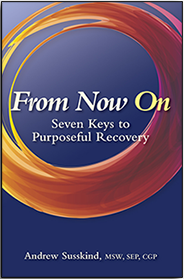In the 1980s, the concept of safer sex was developed in response to the AIDS crisis. It may be true that the only safe sex is abstinence; all forms of sex carry some degree of risk. But abstaining from sex is neither realistic nor desirable. Back in that time of uncertainty and fear, society endorsed cautious sexual choices. Today, nearly forty years later, the dilemma still lingers.
How do you define safer sex in the context of your recovery? Without letting go of the importance of STI prevention methods, consider opening up your definition of safer sex. You may also consider looking into sensual experiences such as cuddle parties, massage exchange, improvisational dance, or partner yoga—all options to move toward body awareness, relaxation, and safer touch. It’s nearly impossible to have truly fulfilling sex without relaxing your body.
Masturbating in moderation can also provide relaxation as you explore self-touch as a fun, pleasurable choice. Yet it’s another controversial topic for sex addicts. When not done compulsively, masturbation is a means of sexual self-care. Masturbation can be a loving, safe, self-appreciative way to enjoy yourself when you are truly mindful. In the past, masturbation often became habitual and hyperfocused on porn images rather than focused on the pleasure in your body. Because the mind absorbs images like a sponge, too much exposure to porn can make it the primary erotic turn-on, getting in the way of the pleasure of real-life sex.
Enter this territory gradually if you masturbated compulsively in the past. Discuss your self-pleasuring habits with a sponsor or therapist to remove masturbation from the secretive, taboo part of your sexual repertoire. Ease into this sometimes-raw discussion, and pace yourself to avoid a shame spiral. Remember, healthier forms of masturbation can be an essential part of sexual healing and vitality.




